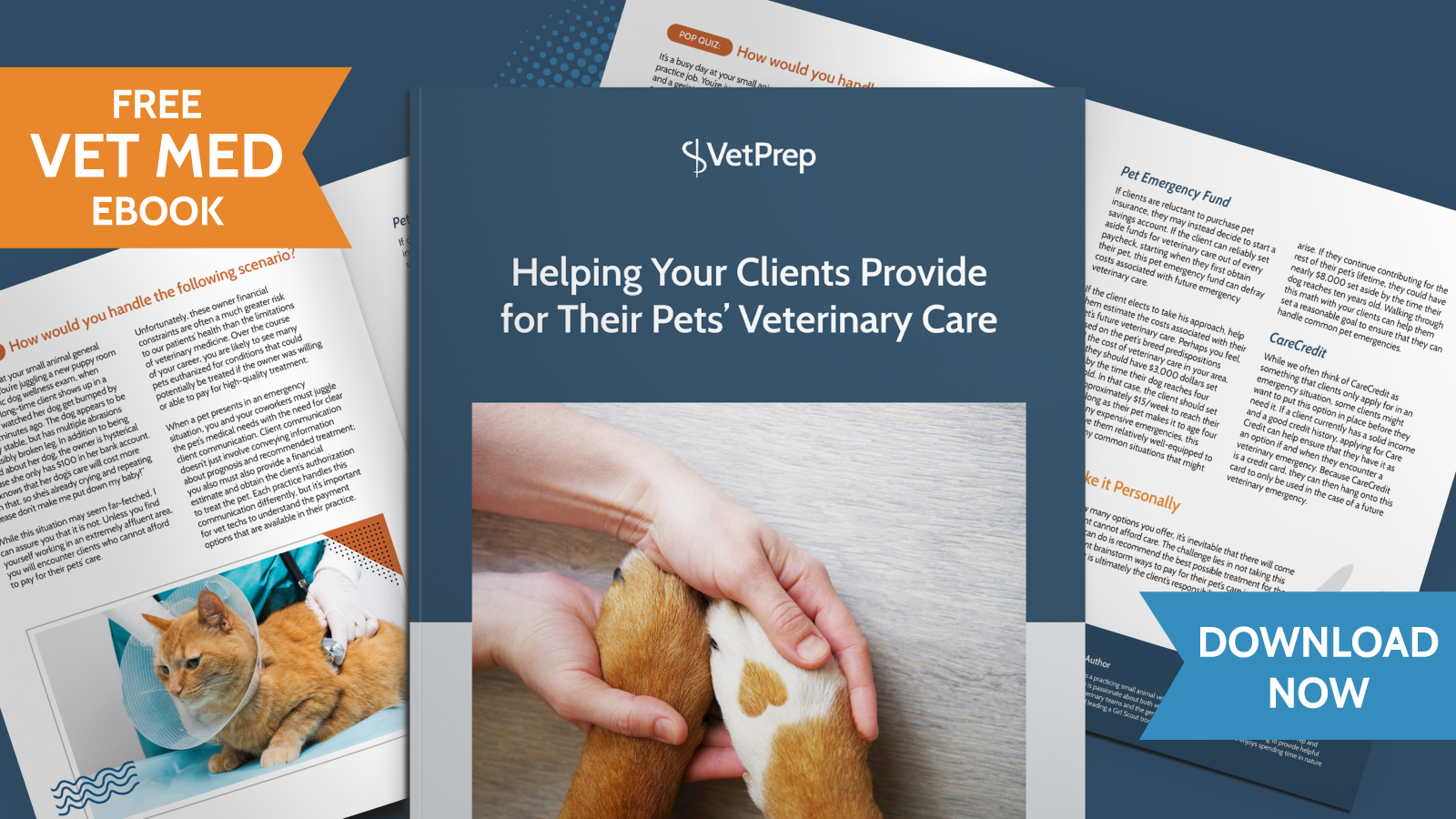
 As much as we hate to admit it, we all know that many pets die each year because their owners are unable to afford veterinary care. Like it or not, high-quality care is expensive.
As much as we hate to admit it, we all know that many pets die each year because their owners are unable to afford veterinary care. Like it or not, high-quality care is expensive.
This leads some clients to forego treatment or even to euthanize their pets for financial reasons.
If we, as veterinarians, can convince pet owners to enroll in pet insurance from an early age, we are far less likely to find ourselves performing economic euthanasias on these pets.
Therefore, you would think we should all be doing our best to talk about pet insurance at every visit, right? In reality, though, many of us avoid conversations about pet insurance. Our days are often hectic, we have limited time with each client, and pet insurance is a complex topic that is difficult to distill down into a brief client chat.
How can we make pet insurance conversations more efficient and productive?
Try these 5 Tips:
1. Talk to clients about the value of pet insuranceMany clients are completely unaware of the high costs that can be associated with veterinary medicine. I like to tell clients about a Great Dane puppy that was a patient of a hospital I worked at as a new grad. This crazy pup ended up needing two separate foreign body surgeries before she was 18 months old! One surgery was performed at our general practice, while the other was performed at the emergency clinic. These clients easily could have spent many thousands of dollars on these surgeries, but they had purchased pet insurance and it covered most of their costs. In their case, having a pet insurance policy saved them several thousand dollars!
2. Highlight key differences between human health insurance and pet insurance
There are many similarities between human health insurance pet insurance, so it’s reasonable to think of the two types of insurance as comparable. However, there are also key differences. Many pet insurance plans, for example, require the client to pay their pet’s veterinary expenses and then submit a receipt for reimbursement. On the plus side, this means that pet owners can use their pet insurance at any veterinary practice they choose; there is none of that in-network and out-of-network headache that accompanies human health insurance. On the downside, though, clients need access to savings or a credit card in order to use this type of policy.
Also, while most human health insurance policies now cover preventative care, wellness coverage is not covered by most pet insurance policies. It may be available at an extra charge, but the primary focus of pet insurance is injury and illness coverage.
3. Resist the temptation to recommend a single product
It can be dangerous to recommend a particular insurance provider. First of all, providers are constantly changing their policies. Even if you had great experiences with a specific provider’s coverage of a particular condition in the past, there is no guarantee that the provider still offers that level of coverage. Additionally, every pet and every client has different requirements. A plan that is an excellent fit for one client or pet may not be a good fit for another.
Instead of recommending one specific provider, consider narrowing the field down to two or three options. This makes pet insurance less overwhelming for owners, while still allowing them to choose the plan that works best for their situation.
4. Mention notable common hereditary condition exclusionsMany pet insurance companies limit coverage of hereditary conditions. Each provider defines hereditary conditions slightly differently and excludes different conditions from coverage. For example, Nationwide, has a list of conditions that they will not cover in any dog. This list includes conditions like hip dysplasia, third eyelid prolapse, and tracheal collapse.1 They also maintain a list of breed-specific exclusions, including pannus in Airedales, dermatomyositis in Basset Hounds, and Beagle pain syndrome in Beagles.2
All clients (even the owners of mixed-breed dogs) need to take note of hereditary condition exclusions. If a dog belongs to a breed that is highly likely to develop one or more hereditary conditions, however, these exclusions become even more important. Clients should take that information into account when selecting a policy.
5. Emphasize the importance of beginning coverage early
If your client is interested in pet insurance, encourage them to sign up for coverage as soon as possible! Pet insurance will not cover any chronic pre-existing condition that was diagnosed before coverage started. Even curable pre-existing conditions that have already been treated (such as respiratory tract infections and urinary tract infections) may be subject to a waiting period after beginning coverage. For this reason, clients should purchase pet insurance as soon as possible, in order to minimize the likelihood that their pet develops a pre-existing condition before coverage is in place.
Keep it Simple
As a new grad, I can almost guarantee that you will feel a bit of a time crunch in exam rooms. The thought of launching into a comprehensive discussion of pet insurance, including all of the differences between providers and all of the caveats, can seem overwhelming.
Focus on what’s most important:
- Pet care can be expensive.
- Pet insurance works like human health insurance to defray costs, though there are a few key differences.
- There are several good providers, but you will need to do your research to determine the best option for you.
- Pay attention to hereditary condition exclusions.
- Don’t wait; begin coverage ASAP.
These pet insurance highlights can easily be covered in just a few minutes. You could even allow a trusted vet tech or vet assistant to cover them, if you’re too busy to do so yourself.
Finding time for this quick conversation can make a big difference in your ability to treat your patients, so it’s worth the time investment!
References
- Nationwide Pet Insurance. Conditions Not Covered. Retrieved from: https://assets.ctfassets.net/vv3ti973ux47/Gv52hUnTbcZxGo7AIxuo3/0ac72625871c49a51e5f2c49e21dc0c9/1537_Conditions_Not_Covered_Dog_Cats.pdf
- Nationwide Pet Insurance. Excluded Hereditary Conditions by Breed. Retrieved from: https://www.petinsurance.com/hereditary-conditions/




